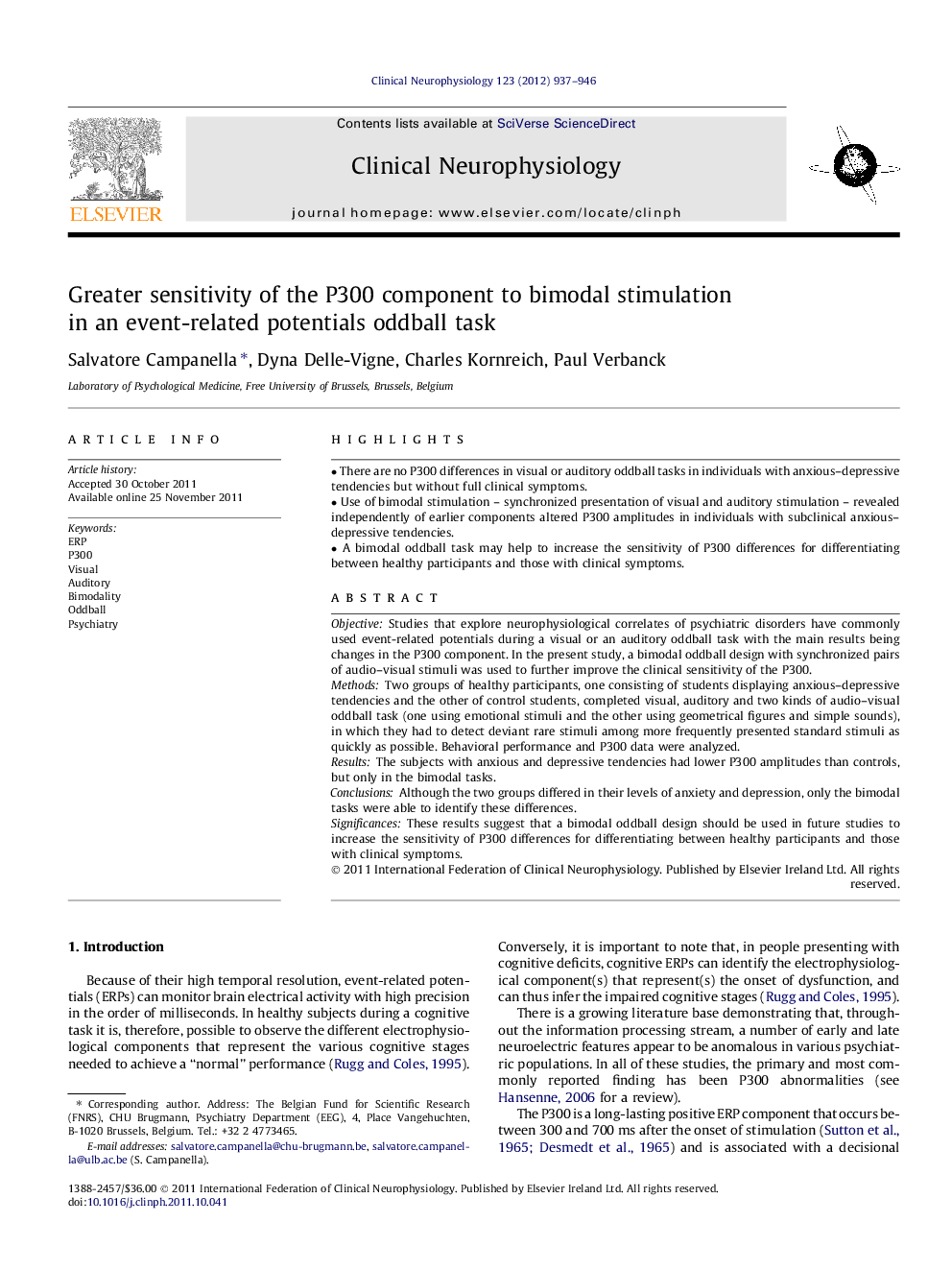| Article ID | Journal | Published Year | Pages | File Type |
|---|---|---|---|---|
| 3045287 | Clinical Neurophysiology | 2012 | 10 Pages |
ObjectiveStudies that explore neurophysiological correlates of psychiatric disorders have commonly used event-related potentials during a visual or an auditory oddball task with the main results being changes in the P300 component. In the present study, a bimodal oddball design with synchronized pairs of audio–visual stimuli was used to further improve the clinical sensitivity of the P300.MethodsTwo groups of healthy participants, one consisting of students displaying anxious–depressive tendencies and the other of control students, completed visual, auditory and two kinds of audio–visual oddball task (one using emotional stimuli and the other using geometrical figures and simple sounds), in which they had to detect deviant rare stimuli among more frequently presented standard stimuli as quickly as possible. Behavioral performance and P300 data were analyzed.ResultsThe subjects with anxious and depressive tendencies had lower P300 amplitudes than controls, but only in the bimodal tasks.ConclusionsAlthough the two groups differed in their levels of anxiety and depression, only the bimodal tasks were able to identify these differences.SignificancesThese results suggest that a bimodal oddball design should be used in future studies to increase the sensitivity of P300 differences for differentiating between healthy participants and those with clinical symptoms.
